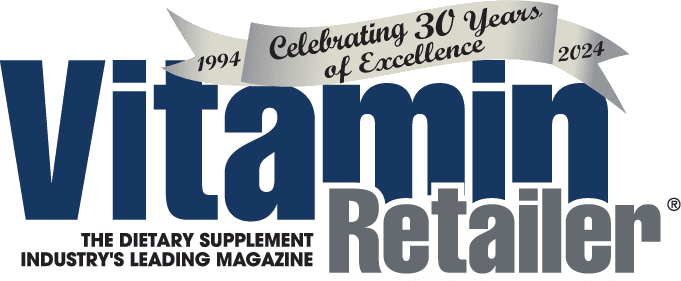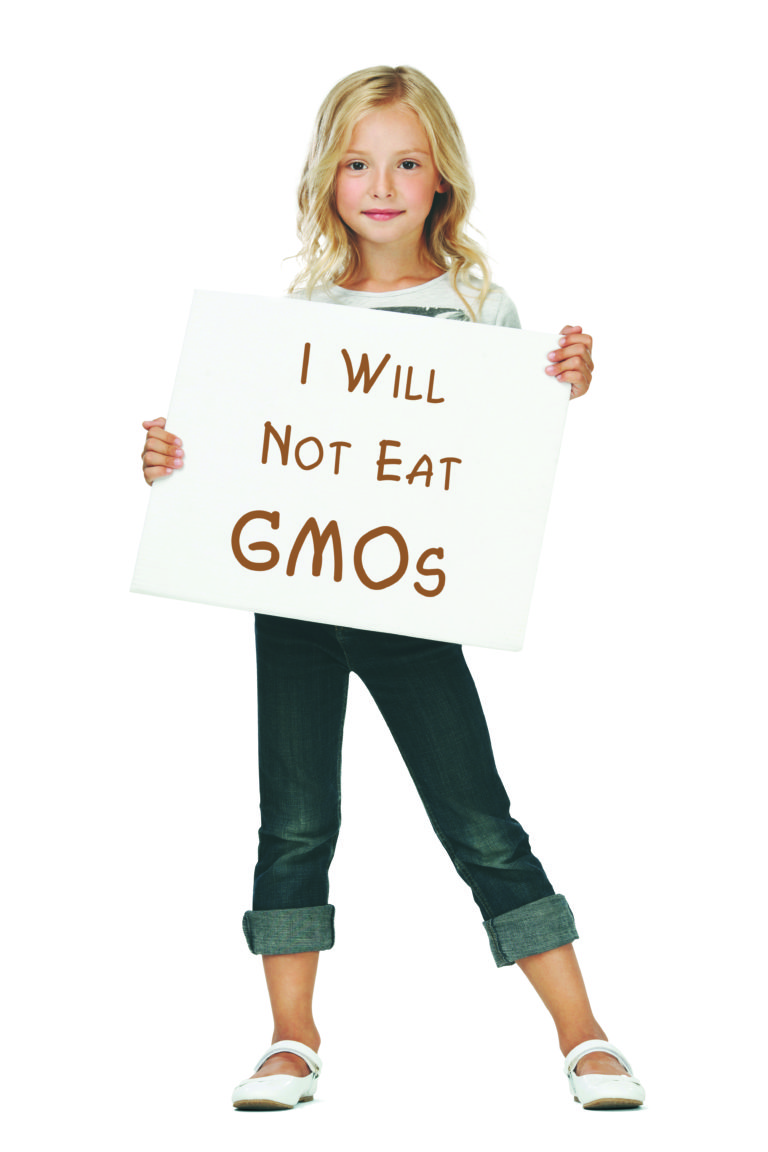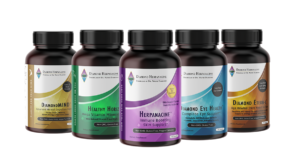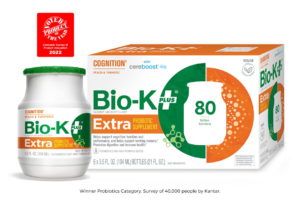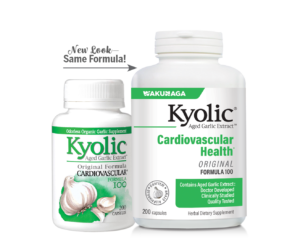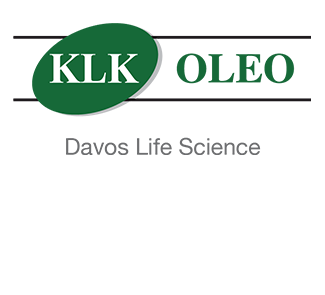A growing and vocal demand for safer, transparent products sends consumers seeking natural retailers’ guidance and offerings.
GMOs (genetically modified organisms) are plants or animals created through the gene splicing techniques of biotechnology (also called genetic engineering, or GE). This experimental technology merges DNA from different species, creating unstable combinations of plant, animal, bacterial and viral genes that cannot occur in nature or in traditional crossbreeding.
The Flavr Savr tomato was the first commercially grown GE food to be granted a license for human consumption. By adding an antisense gene, the California-based company Calgene hoped to slow the ripening process of the tomato to prevent softening and rotting, while allowing the tomato to retain its natural flavor and color.
The U.S. Food and Drug Administration (FDA) approved the Flavr Savr in 1994; however, the tomatoes were so delicate that they were difficult to transport, and they were off the market by 1997. On top of production and shipping problems, the tomatoes were also reported to have a very bland taste.
“When the Flavr Savr tomato hit the produce section at supermarkets, consumers were unhappy with the results. It sparked a media frenzy that brought to light that that tomato had been genetically modified and did not live up to the expectations of the engineers,” said Nicole McCann, food campaigns director with Green America. “That moment started a growing movement of consumers and citizens that were alarmed that their seemingly straight-forward tomato was anything but.”
The disappointment with the GE tomato is an example of how test-tube farming has failed to deliver on expectations. This type of failure typically carries consequences, but GMOs are anything but typical: Rather than acreage dwindling, it has actually exploded—the acreage of GMO grains has grown from 4. 2 million acres in the late 1990s to more than 400 million acres in 29 countries today, according to Ron Seibold, cofounder of Kansas-based Pines International, Inc.
“While genetic engineering promises higher crop yields, more nutritious foods and environmental benefits, these claims remain controversial and much more research is needed to gauge the true value and long-term impact of GE crops and GM foods,” added Michael Lelah, PhD, technical director with NOW Foods in Illinois, which has developed a non-GMO assurance process. “While there have been groups working against GMOs for two decades, in recent years more information has surfaced that raises safety questions based upon research rather than speculation. It was the GMO labeling bill introduced in California two years ago, and its resulting publicity, which awakened strong consumer interest and activism.”
Demand
Crisscrossing the United States, Documentarian and Founding Executive Director of The Institute for Responsible Technology (IRT) Jeffrey M. Smith has seen that consumer awareness is at an all-time high. “We saw upsurge beginning in 2010 and it has continued to move up from there,” he said, noting that The Hartman Group recently released a survey showing that in 2007, a little more than 15 percent of Americans said they would reduce or avoid the use of products containing GMOs. “In 2010, that percentage was up to 25, and in 2013 it was 39 percent.”
A Packaged Facts report showed the global sales of non-GMO food and beverage products will double to $800 billion by 2017, increasing at a compound annual growth rate (CAGR) of 12.9 percent in the next five years to 30 percent of U.S. food and beverage retail sales by 2017, noted Arran Stephens, founder and CEO of Nature’s Path in Canada, which is a founding member of the Non-GMO Project, North America’s only third-party verification for non- GMO food and products made according to best practices for GMO avoidance. All of the company’s products have passed the rigorous independent testing and verification process.
“As people become more educated about the independent, clinically documented risks of GE foods, coupled with the government and junk food industry’s lack of transparency, our customers will continue to drive exponential growth in both non-GMO and organic foods,” The said. “The gold standard is certified organic, because neither GMOs nor persistent pesticides and chemical herbicides have ever been allowed in this system. It’s important to realize that unless food is certified organic, it is most likely grown with carcinogenic pesticides, herbicides and chemical fertilizers.”
True, certified organic has long been considered the gold standard in food safety, but the affect that GMOs have had on today’s market have required a revision to that thinking.
“GMO grain products have already worked their way into most products sold in grocery and even natural food stores. Although USDA (U.S. Department of Agriculture) Organic was grown with non- GMO seed, the Non-GMO Project Verified logo offers genetic testing to ensure that the grain is not contaminated from GMO pollen growing into a non- GMO field,” Pines’ Seibold explained. “The consumer needs to know that unless a product [carries both logos], it was probably grown with herbicides and pesticides, as the Non-GMO Project is not the same as certified organic. Technically, certified organic should always be non-GMO because organic certifying agents require inspection of seed records to make sure no GMO seed was used, but the Non-GMO Project verification offers an extra layer of protection, at least with respect to GMO.”
This shift in thinking has in fact permeated to the consumer, as evidenced by a recent consumer survey that shows “Non-GMO” topped “Organic” as a driving factor in brand choice in the 2014. The MamboTrack Survey—“Market LOHAS (Lifestyle of Health and Sustainability) Mambo Sprouts Marketing Annual Natural and Organic Consumer Research,” which was fielded online among 1,000 health-conscious consumer panelists in December 2013—found 80 percent seek out non-GMO products with 56 percent saying non-GMO was key to brand buying (versus 52 percent citing organic). This marks the first time non-GMO was rated above organic in purchase intent, according to Market LOHAS in Boston, MA.
Good for Business
There are now more than 15,000 Non- GMO Project Verified products and the demand for non-GMO choices in all categories of products continues to increase exponentially, according to Courtney Pineau, assistant director of the Non- GMO Project. “We’ve watched sales of Non-GMO Project Verified products increase from $348.8 million in 2010 to more than $5 billion at the close of 2013,” she said, noting that SPINS data reports that the sales of products carrying the seal grew by approximately 15 percent last year. “We continue to see increased interest from supplement providers, and we are actively working with supplement companies to develop a more robust supply chain for non- GMO ingredients.”
Utah-based Trace Minerals Research (TMR) decided to get involved with the non-GMO movement to give customers another choice in their dietary supplements. “Many customers have requested non-GMO products over the past few years and as the science has improved and awareness has grown, TMR made a commitment to transform our entire line over to non-GMO supplements,” said Ryan Fisher, the company’s general manager. “I think some vendors and suppliers were wondering if this was a fad, and were hesitant to make the costly changes associated with switching over to non-GMO. Once they realized it wasn’t, they slowly began to make non-GMO ingredients and products a priority.
“I still believe that the demand is in its early stages compared to what it will be,” he added. “Savvy companies who are making changes now will be in a very good position as more Americans are educated on the benefits of non-GMO products and the demand continues to grow.”
But Green America’s McCann expressed that we are at a tipping point for the non-GMO movement, and stressed that removing GMO ingredients is indeed good for business.
“Companies that remove GMOs and display the Non-GMO Project verification label report 15 to 20 percent increase in sales. Three years ago, most non-GMO crops grown in the U.S. were sold overseas; currently, 50 percent of non-GMO crops in the U.S. are sold domestically,” she said, pointing out that Chipotle’s recent commitment to removing GMOs resulted in more than a 15 percent increase in stock price. “Planning an orderly transition for removing GMOs prevents cost impacts to companies and cost increases to consumers.”
But while progress is being made in natural food stores, Andreas Koch, marketing director with Washington-based Barlean’s, a company recognized two years ago as offering the first flaxseed to be Non-GMO Project Verified, and is in the process of getting more of its product line Non-GMO Verified, noted that the trend is growing slowly in mass channels, illustrating a clear draw on which retailers should capitalize.
“Natural foods store buyers are requiring manufacturers to produce non-GMO products, which is predicated by consumer demand. Remember: this is primarily in the natural channels. This trend is slowly moving into the mass markets but will likely never be 100 percent non-GMO because of the value-seeking shoppers,” he said. “My prediction is that there will be a great divide. A growing population will demand GMOs removed from their food and will pay extra for this luxury. There will also be a large population that will continue shopping by price. In time, you will see mass grocery store planograms changing to accommodate both types of consumers.”
Labeling
A 2012 Mellman Group poll found that 91 percent of American consumers wanted GMOs labeled. In July 2013, the New York Times reported that already staggering number rose to 93 percent of Americans. “This mirrors the trend we’ve seen with manufacturers seeking Non-GMO Project verification,” said Pineau. “Brands are listening to their customers and are working diligently to remove GMOs from their products.”
And in 2013, voters were given a chance to weigh in—nearly 49 percent of voters in California (Proposition 37) and Washington (Initiative 522) voted in favor of labeling.
“The state labeling initiatives have been a positive even though they were defeated—so many Americans are more informed about GMOs in their food that had no idea before the initiatives took place,” said Matt McLean, CEO and founder of Uncle Matt’s Organic, adding that his 15-year-old company has always been non-GMO because it was certified organic from the start. “More people than ever are aware of GMOs and “want to avoid them.”
The fight for GMO labeling continues on both the state level, with proposed legislation in more than 20 states, as well as at the national level with Just Label It. Last month Nature’s Path, along with more than 200 organizations and businesses, wrote to President Obama urging him to require foods containing GM ingredients to be labeled, while advocates and Congressional supporters pushed for the passage of national legislation. “It was a reminder to the President that prior to his first election, he made a public promise to support labeling of GMOs,” said Stephens. “Meanwhile, the Grocery Manufacturers Association (GMA) is calling for labeling legislation on their terms—proposing to set up a voluntary program for food companies to label foods that are GMO free, label GMO ingredients as ‘natural’ and preempt state labeling laws.”
Although proposals in states like California and Washington to label GMOs were beaten down, Pines’ Seibold sees hope that nearly half of the states in the U.S. have laws that have passed conditionally or are now in process, all of which would require labeling of GMO ingredients in foods. Green America’s McCann added that this year there are major efforts in Oregon, Arizona and Maryland around ballot initiatives.
With increased consumer consciousness, demand has taken on a whole new meaning. Stephens pointed to consumer pressure resulting in General Mills converting one of thousands of its products— original Cheerios—and Post’s Grape Nuts to non-GMO. “People are voting with their dollars, and big companies are listening,” he said. “Consumers distrust GMOs and that has the big chemical and consumer packaged goods (CPG) companies scared.”
This distrust is something that IRT’s Smith concurred as being a huge purchase motivator, and cautioned supplement manufacturers, in particular, to pay attention.
“I’ve received e-mails from people who believed they were non-GMO for years, but were dismayed to find that they actually aren’t because of their supplements. It’s an interesting emotion—a consumer who feels fear or betrayal because they discover there could be GMOs ‘lurking’ in their supplements,” he said. “There’s a lot of energy behind this moment of discovery. And some times it’s not the fault of the supplement maker, who isn’t advertising their product as non-GMO; rather, it’s the customer assuming their [natural health] product is non-GMO.”
Going Forward
While things are moving in the right direction, momentum cannot be lost. With the science “still being out” on GMOs, NOW Foods’ Lelah expressed that continuing research, sensible labeling legislation, increased availability of ingredients and marketing with integrity will all be necessary for the market to sustain growth. “More research needs to be done into the potential impact that GMOs have on our health,” he said. “Communication will be essential to keep accurate information available, as different interests debate the issues.”
And social media will continue to be an integral piece of education initiatives, driving consumer awareness and advocacy on GMO issues. Pines, for example, has been a leader in this movement, as the company has nearly 20,000 followers on its anti-GMO Facebook page. “For more than three years, Pines International has sponsored a Facebook page (www.facebook.com/pineswheatgrass) dedicated to educating the consumer about GMO foods, organic foods and planetary plastic contamination,” said Siebold. “We are not alone. There are several dozen Facebook pages and many organizations that are working to educate the public.”
But as so often is the case, natural retailers are on the front lines, not only in terms of non-GMO education, but also product availability.
“At the Non-GMO Project, we see retailer engagement as being critical to the success of our mission, which is to preserve and build a non-GMO food supply,” said Pineau. “Retailers are the primary interface between manufacturers and shoppers. Shoppers looking for Non-GMO choices in the marketplace gravitate toward retailers that have strong purchasing policies and readily educate their staff and clientele.”
For retailers looking to stock their shelves with non-GMO Project Verified products, one of the first steps Pineau suggests is to share their non-GMO commitment with their suppliers and encourage them to seek third-party verification for any non-GMO claims they make. “Retailers need to let manufacturers know what they are hearing from customers,” she said.
Nature’s Path’s Stephens stressed that rather than waiting for legislation, stores should hold their shelf space at a premium, requiring brands to label GMO ingredients in order to be sold on their shelves, “as Whole Foods has done, and as others are planning to do,” he said, adding that employees should be fully trained to answer questions about GMOs.
Barlean’s Koch reiterated that stores can make themselves a non- GMO destination, noting that their vetted suppliers can be a great resource. “Aside from educating via social media and in-store, utilize the shelf tags, Non- GMO Project Verified hang-tags, in-shelf hand-outs and bag-stuffers to educate consumers directly,” he said.
“Retailers should know which suppliers are involved in improving our food supplies and what documentation that they have to support non-GMO’s in their products,” said TMR’s Fisher. “If [a retailer is] purchasing from suppliers who have no knowledge of the movement or have no intention of getting involved, that is a big red flag.”
In conclusion, consumers are more conscious about how the food they eat affects their health and the planet, and are taking a close look at the safety of GMOs. “Between legislation and education efforts, there is a national conversation happening. There is always more that needs to be done until all GM ingredients are labeled,” said Stephens. “When demand for GMO foods dries up, farmers will stop growing them. The movement has just begun. Just wait and see, but don’t be left behind!”
